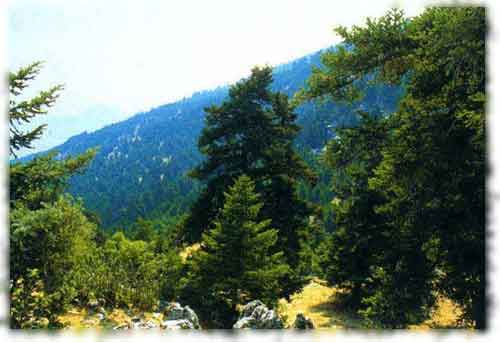Sights
Agios Georgios Castle
The Castle of Agios Georgios (Peratata), known as “Castle”, is located in the southwestern part of Argostoli, in the village of Peratata. The first reference to the castle is made around 1262 and it has been preserved in the present area since the 16th century. During the Venetian rule, the castle was the capital of the island with a population of 15,000 living inside it as well as the surrounding villages.
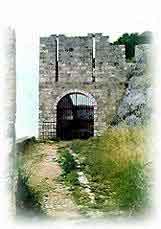
Metaxata
In the village of Metaxata we can admire the house where Lord Byron, the famous English poet, lived for a few months in 1823, His statue has been created in front of the house.
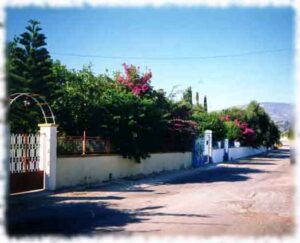
Lake Melissani (Karavomylos – Sami)
The underground lake attracts a huge number of visitors. It was discovered in 1951 by the speleologist G. Petrochilos and dates back to the early Hellenistic period. During a strong earthquake a large part of the roof collapsed, revealing a unique panorama and it has to do with the way the light reflects on the surface of the lake in green and blue colors. Every day, boat visitors visit different parts of the cave, where one can admire the stalagmites hanging from the walls. During antiquity, the cave was a place of worship of the God PANA and the nymph MELLISANTHI. Interesting archaeological discoveries include the altar of God, an idol made of clay as well as one depicting a female figure. According to legend, the nymph MELLISANTHI committed suicide in the lake, because PANAS refused her love. In the same way, “the petrified dolphins, hanging from the walls”, are associated with the myth as they are believed to have been placed there to deliver the nymph’s messages to God.

Drogaratis Cave (Karavomilos, near Sami)
The cave of Drogarati is located three kilometers outside of Sami. After walking down a 44-meter corridor, visitors arrive at a hall (30 m x 40 m), which is decorated with stalagmites and stalactites. The cave also contains a hall, called the Hall of Apotheosis, where musical concerts are held.
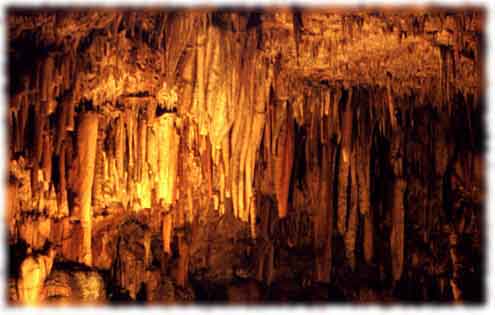
Macinaic Tomb in Jannata
In Jannata, the archaeologist Lazaros Colonas discovered a large vaulted tomb from the Mycenaean period. Findings of fossils, tools and vessels prove that the area has been inhabited since prehistoric times. The grave is 6.80m. The finds have been dated from 1400 to 1000 BC. The tomb is the largest and best preserved among those found on the island. Its discovery proves the existence of a powerful Mycenaean center, possibly that of Homeric Ithaca.
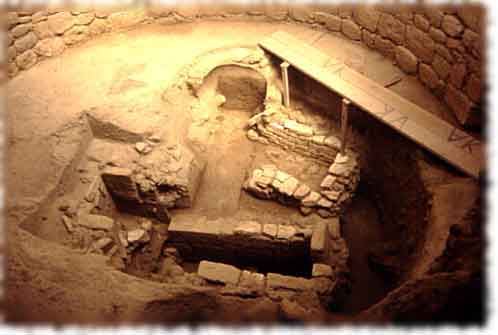
Castle of Assos
According to history, in 1585 the Venetians asked a group of Kefalians to build an additional castle, apart from that of Agios Georgios, for the better protection of the island. So it was decided that the most suitable area would be that of the peninsula of Assos, due to the steep coasts that were inaccessible from the sea. The engineers Marinos Gentilini and Gabuti collaborated on its construction, which makes the castle a fine example of the European art of fortification of the 16th century. unfortunately, the establishment of a permanent population was difficult on the peninsula, resulting in the fall of the castle. In modern times it served as an agricultural prison until 1953.
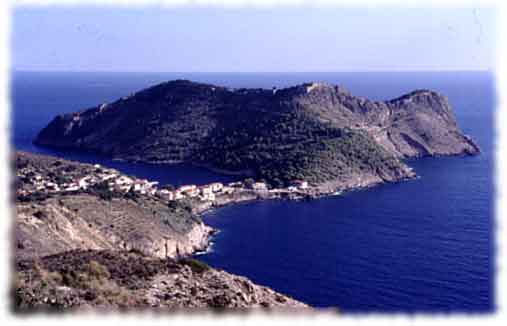
Agios Andreas Monastery (Peratata)
The Monastery of Agios Andreas was almost destroyed by the earthquake of 1953. The church has been reconstructed and used as a museum. The 1953 earthquake revealed frescoes from the 16th century, due to the detachment of cement pollination. Among the many treasures discovered are icons, vestments, but the most priceless exhibit of all, is the leg of St. Andrew, preserved in a glass reliquary.
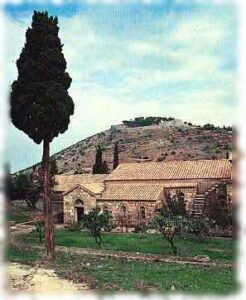
Ainos
Mount Ainos, or according to the Venetians Monte Nero, is the highest mountain of the island. It is forested with black fir trees of the Cephalonian FIR, which is unique worldwide. Consequently, in 1962 the Ainos forest with a total size of 28,620 m² was declared a national park. The park, which is the smallest of 10 national parks in Greece, is located in the north-eastern part of the island and is divided into two separate parts: the main volume Ainos (23,160 m²), with a height between 800m. and the highest peak (Megalos Soros) at 1,628m. and Rodi mountain, which you find in the northwest of the mountain (5,460 m²), with a height between 850m. high and the peak 1.125m. Other types of germination that one encounters are: young shoots, bushes, grasses, oak trees, etc. Many varieties of the above are endemic to Kefalonia. The top of the mountain offers an incredible view. From there you can gaze at Zakynthos, the mountains of Ithaca and Peloponnese and if you are really lucky, you can admire the wild horses, a species that has almost disappeared. The area is also of archaeological interest, since the altar of DIA has been discovered there. Besides Megalos Soros, other high peaks are: Red Ridge, Kserakias and Agia Dynati.
